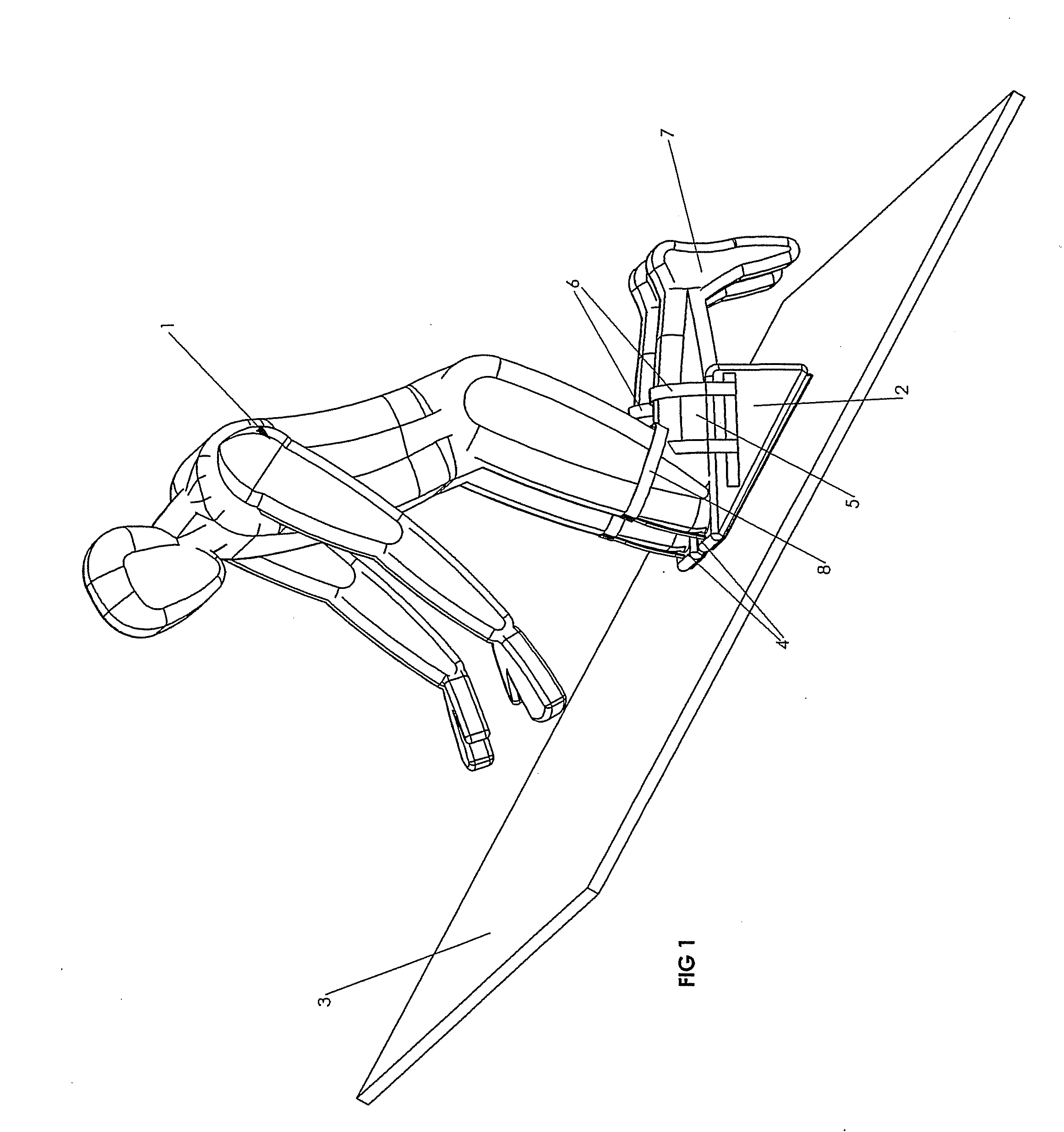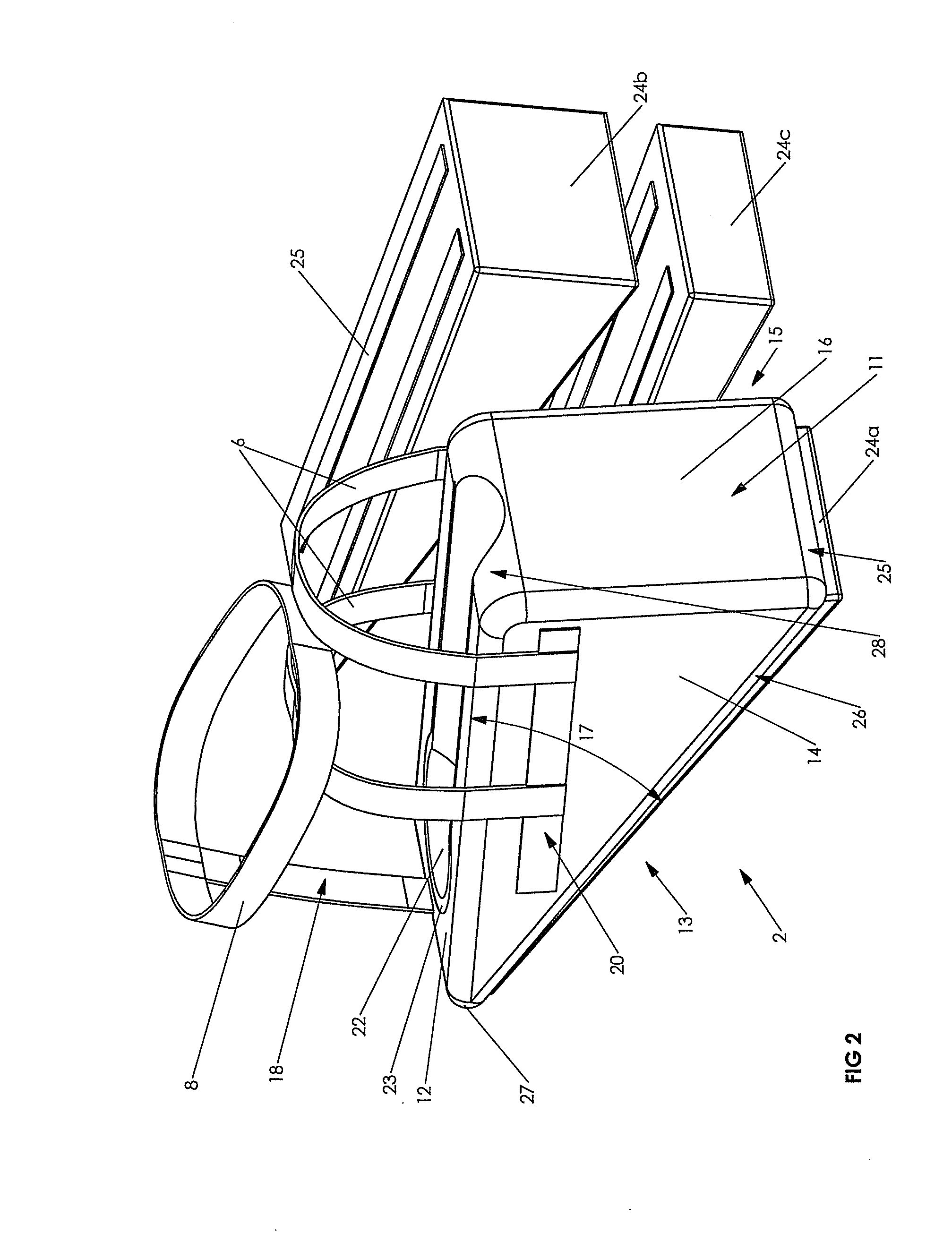Roofer's kneepads
- Summary
- Abstract
- Description
- Claims
- Application Information
AI Technical Summary
Benefits of technology
Problems solved by technology
Method used
Image
Examples
Embodiment Construction
[0021]Referring to FIG. 1, roofer 1 is shown kneeling comfortably on inclined roof surface 3 using a pair of shin wedges 2 configured according to the present invention. The shape of the shin wedges is generally that of a wedge, having two non-parallel plane surfaces meeting at the thin side of the solid figure but not necessarily forming a sharp edge there. This shape could be described as a blunt wedge, but here is simply called “wedge”. The top surface may be not a flat plane, but rather (as will be described below) it may have a lengthwise depression to conform to the shin of the user. Opposite the thin blunt side is a thicker side to complete the solid triangle. The shin wedges are always worn so that the thin end is near the users knee (the proximal end) and the thick end is towards the foot (the distal end).
[0022]The shin wedge also usefully provides leverage, allowing the user to lever a knee up by rotation of the shin wedge about its distal edge.
[0023]In FIG. 1, for illustr...
PUM
 Login to View More
Login to View More Abstract
Description
Claims
Application Information
 Login to View More
Login to View More - R&D
- Intellectual Property
- Life Sciences
- Materials
- Tech Scout
- Unparalleled Data Quality
- Higher Quality Content
- 60% Fewer Hallucinations
Browse by: Latest US Patents, China's latest patents, Technical Efficacy Thesaurus, Application Domain, Technology Topic, Popular Technical Reports.
© 2025 PatSnap. All rights reserved.Legal|Privacy policy|Modern Slavery Act Transparency Statement|Sitemap|About US| Contact US: help@patsnap.com



